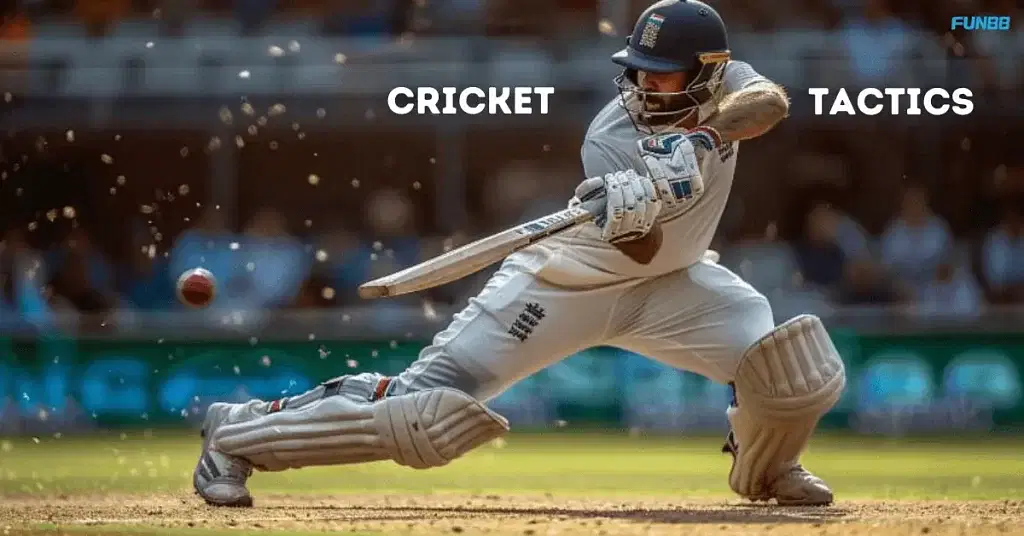Cricket is not just a game of bat and ball; it’s a chessboard of strategy played out on a 22-yard pitch. Whether you’re playing in the gullies of Mumbai or practising at the nets in an international stadium, understanding the key strategies and cricket tactics can significantly enhance your performance and appreciation of the game. Let’s delve deep into crafting a winning cricket strategy and other details.
The Foundations of Strategy in Cricket
Cricket strategy begins with understanding the format you are playing, whether it’s Test cricket, One Day Internationals (ODIs), or Twenty20 (T20). Each format has its own demands and requires different strategies.
Test Cricket
In Test cricket, patience is a virtue. These cricket tactics revolve around building innings, wearing down the opposition, and capitalising on any lapses. Bowlers aim for consistency, exploiting every weakness in the batsman’s technique. Remember, it’s often a game of attrition where endurance matters as much as skill.
One Day Internationals
In ODIs, you balance preservation with aggression. Batting strategies often emphasise building partnerships while keeping the run rate ticking. Bowlers must be versatile, adapting to conditions and situations and employing variations to contain or take wickets as required.
Twenty20 Cricket
For T20s, it’s all about aggression and adaptability. Batting is high-octane from the start; bowlers need clever tactics to outsmart batters in just four overs. Field placements are crucial for restricting boundaries and applying pressure.
Core Strategies for Batting
- Building Partnerships: Cricket is a team game, and batting partnerships are crucial. The key is rotating the strike and ensuring both batsmen are comfortable and scoring. Communication between the batters is essential here.
- Shot Selection: Knowing which shots to play at which deliveries is fundamental. This ability involves assessing field placements and bowlers’ strategies. Disciplined shot selection limits risks, particularly in longer formats.
- Dealing with Pace and Spin: The game changes by introducing different bowling styles. Pacing a pitch’s bounce and playing spin effectively requires different skills—using feet against spinners, optimising back-foot play against fast bowlers, etc.
- Running Between the Wickets: Smart running keeps the scoreboard ticking and disrupts bowlers. Quick singles, well-judged twos, and the odd three are essential components of an effective batting strategy.
- Adapting to Conditions: Weather and pitch conditions profoundly impact the game. A batter must quickly adapt, whether it’s manoeuvring play on a slow track or pacing innings under swing-friendly cloudy skies.
Related Read: Role of Cricket Analytics in Shaping Modern Cricket Strategies
Strategies for Bowling
- Setting Up a Batsman: Good bowlers plan their dismissals by executing a series of deliveries that lead a batsman into a trap. This could involve a string of outswingers followed by an inswinger, catching the batsman off guard.
- Varying Lengths and Lines: Standard balls can become predictable, so it’s important to vary lengths—short balls to surprise, fuller deliveries to tempt wedges. Similarly, adjusting the line can exploit different weaknesses.
- Utilising Variations: In all formats, particularly T20s, variations—slower balls, yorkers, bouncers—can deceive even seasoned batters. Mastering control over these variations is key.
- Field Placements: Setting the right field is an art in itself. It takes knowing the batsman’s tendencies and predicting shot choices. Slips and gullies come into play for fast bowlers, while spinners often rely on catchers around the bat.
- Reading the Game: Bowlers need to constantly assess batters’ intents. Are they trying to dominate or seeing out a spell? Reading their footwork and shot response can provide clues for adjusting strategy.
Mastering Fielding Tactics
- Positioning for Success: The fielding captain must know his fielders’ strengths (e.g., which player can cover gaps quickly, who has a strong arm for runouts) and place them accordingly to cut off boundaries and invite wickets.
- Understanding Match Situations: Reacting to match scenarios is vital. For example, bringing fielders in close to exert pressure in a chase, or spreading the field to conserve runs in the death overs.
- Keeping Up Energy and Communication: The value of a motivated and vocal fielding unit cannot be overstated, especially in limited-overs cricket, where every run saved counts towards victory.
Captaincy: Orchestrating Your Team to Victory
Good captaincy employs both strategic foresight and on-ground adaptability. A captain needs to read the game like a book and make tactical decisions that sway the game. This might involve sudden bowling changes, unconventional field placements, or inspired batting orders.
- Understanding Each Player’s Role: Every player has a specific role, and understanding these intricacies helps capitalise on their strengths and camouflage weaknesses. A good captain controls this dynamic efficiently.
- Tactical Flexibility: An effective captain adapts cricket tactics on the fly as conditions and situations evolve. This requires bravery and sometimes even instincts that defy conventional wisdom.
- Managing Pressure: Tales of competition, tight finishes, and even sledging are woven into cricket’s fabric. A captain managing pressure well ensures players remain focused and perform to their potential under duress.
Also Read: Anchor Role in Cricket: A Crucial Cricket Position
Online Cricket Betting Tactics: A Guide to Making Informed Decisions
Online cricket betting has become a popular pastime for many sports enthusiasts. To make informed decisions and increase your chances of success, it’s essential to understand various betting tactics and strategies. This section will delve into understanding the best practices and provide insights on how to assess players based on these strategies.
Key Online Cricket Betting Tactics:
- Match Outcome: This is the simplest form of betting, where you predict the winner of a match. Consider factors such as team form, player performance, and head-to-head records.
- Innings Runs: Bet on the total number of runs scored in an innings. Analyse the batting lineup, pitch conditions, and bowling attack to make accurate predictions.
- Wickets: Predict the number of wickets that will fall in an innings. Consider the bowling attack, batting lineup, and pitch conditions.
- Individual Player Performance: Bet on a specific player’s performance, such as their number of runs, wickets, or highest score. Analyse the player’s recent form, historical data, and match conditions.
- Value Betting: Look for bets with higher odds than the expected probability of an outcome. This can provide value and increase your potential winnings.
Assessing Players Based on Tactics:
- Form: Analyse a player’s recent performance to assess their current form and confidence level.
- Head-to-Head Records: Consider a player’s history against specific opponents or in particular conditions.
- Pitch Conditions: Evaluate how players perform on different pitch types (e.g., batting-friendly or bowling-friendly).
- Match Situation: Analyse a player’s performance in different matches (e.g., chasing a target, defending a total).
- Team Dynamics: Consider how a player fits into the team’s strategy and how their performance might be affected by the team’s overall success.
By understanding these tactics and analysing player performance, you can make more accurate predictions and potentially maximise your winnings in online cricket betting.
Conclusion: The Journey Ahead for Aspiring Strategists
Developing strategic insight and tactical sense requires creativity, understanding, and ongoing learning. For those aspiring to master cricket, embracing the challenges and intricacies of strategic layers ensures one’s skillset flourishes far beyond the boundary ropes.
As they say, cricket is a game of glorious uncertainties, and understanding its strategies transforms it from being merely a spectacle to a finely orchestrated sport.
Star it if you find it helpful.

